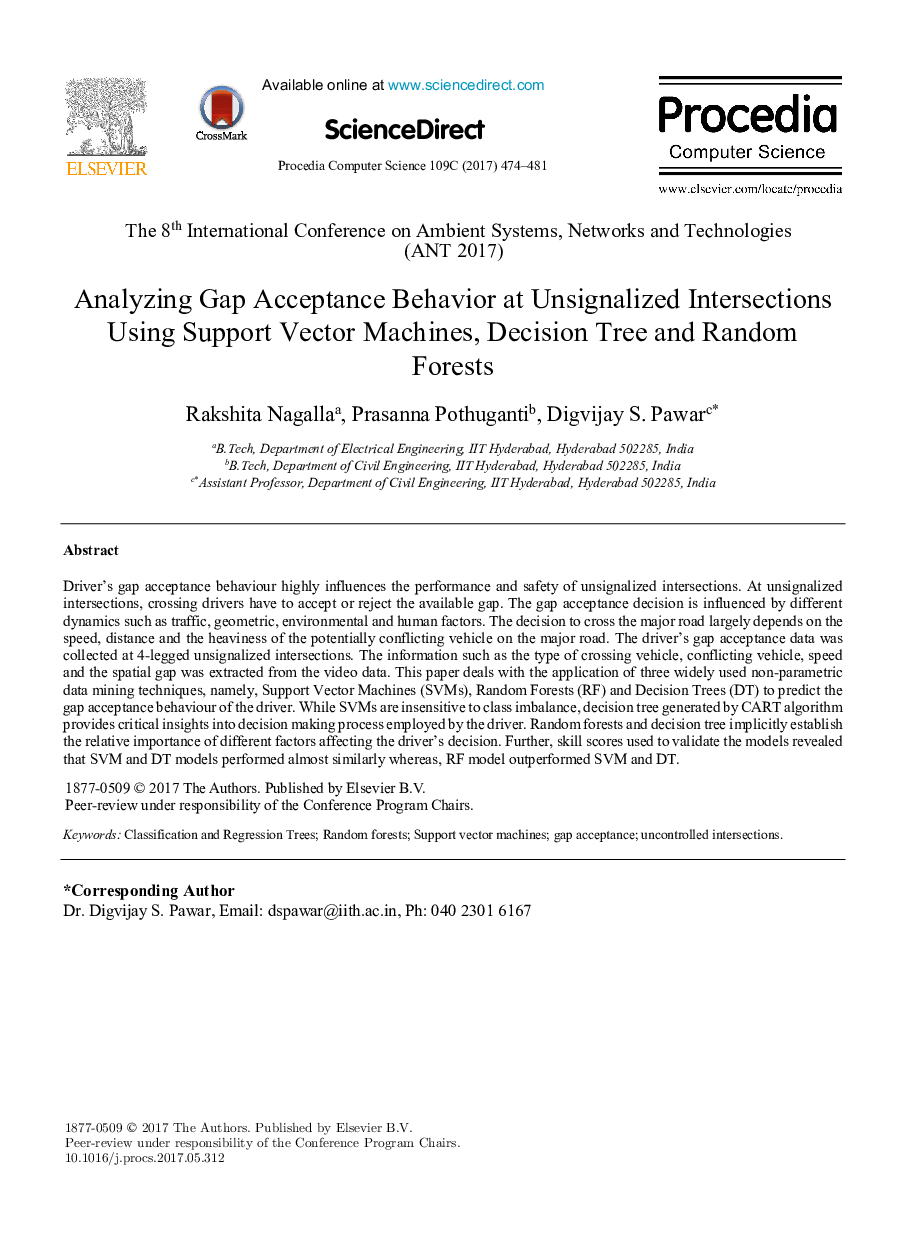| Article ID | Journal | Published Year | Pages | File Type |
|---|---|---|---|---|
| 4961198 | Procedia Computer Science | 2017 | 8 Pages |
:Driver's gap acceptance behaviour highly influences the performance and safety of unsignalized intersections. At unsignalized intersections, crossing drivers have to accept or reject the available gap. The gap acceptance decision is influenced by different dynamics such as traffic, geometric, environmental and human factors. The decision to cross the major road largely depends on the speed, distance and the heaviness of the potentially conflicting vehicle on the major road. The driver's gap acceptance data was collected at 4-legged unsignalized intersections. The information such as the type of crossing vehicle, conflicting vehicle, speed and the spatial gap was extracted from the video data. This paper deals with the application of three widely used non-parametric data mining techniques, namely, Support Vector Machines (SVMs), Random Forests (RF) and Decision Trees (DT) to predict the gap acceptance behaviour of the driver. While SVMs are insensitive to class imbalance, decision tree generated by CART algorithm provides critical insights into decision making process employed by the driver. Random forests and decision tree implicitly establish the relative importance of different factors affecting the driver's decision. Further, skill scores used to validate the models revealed that SVM and DT models performed almost similarly whereas, RF model outperformed SVM and DT.
